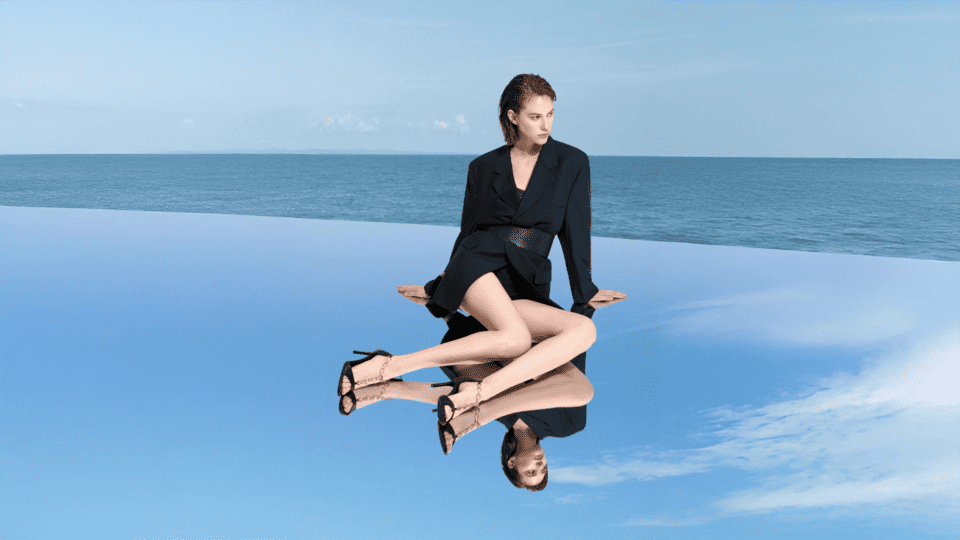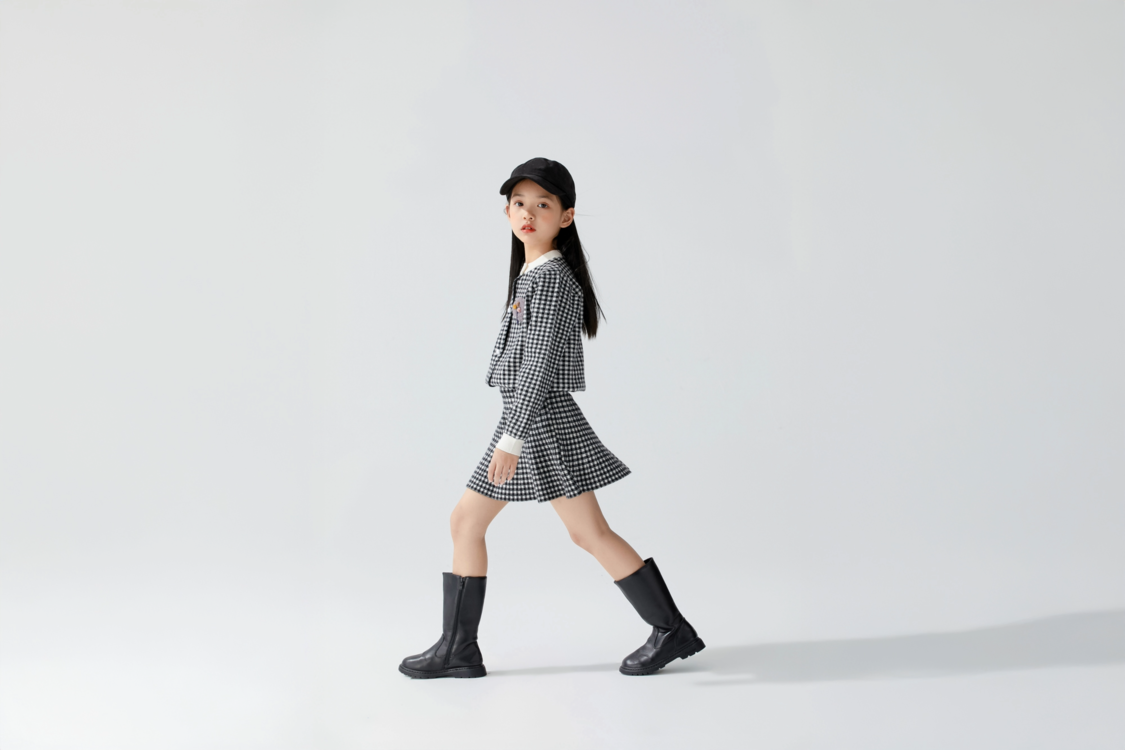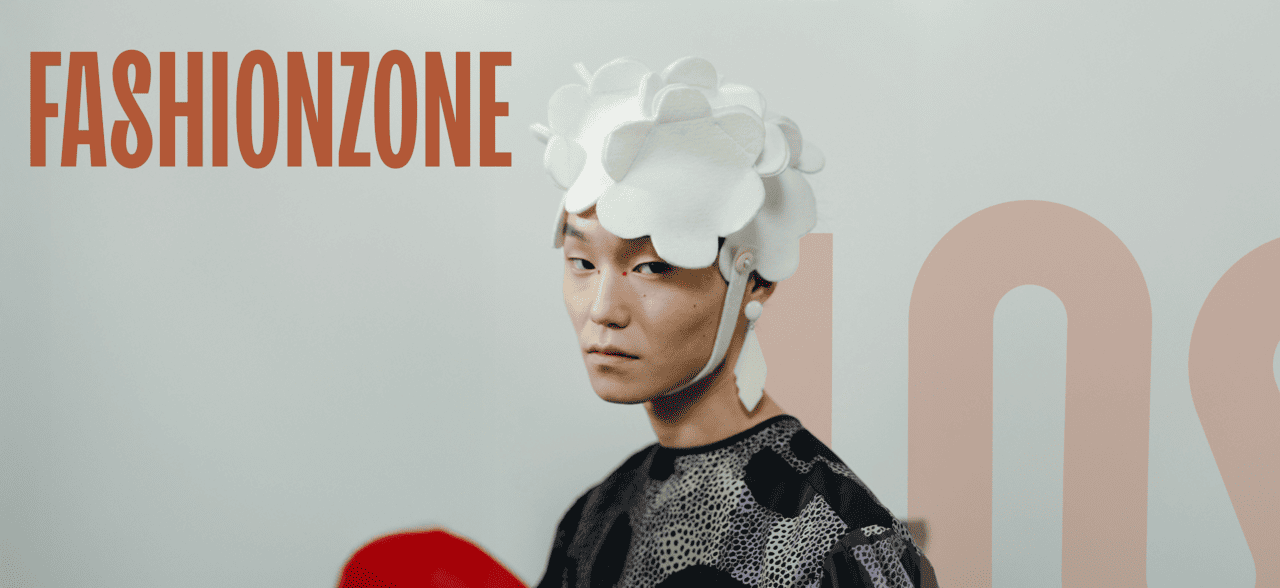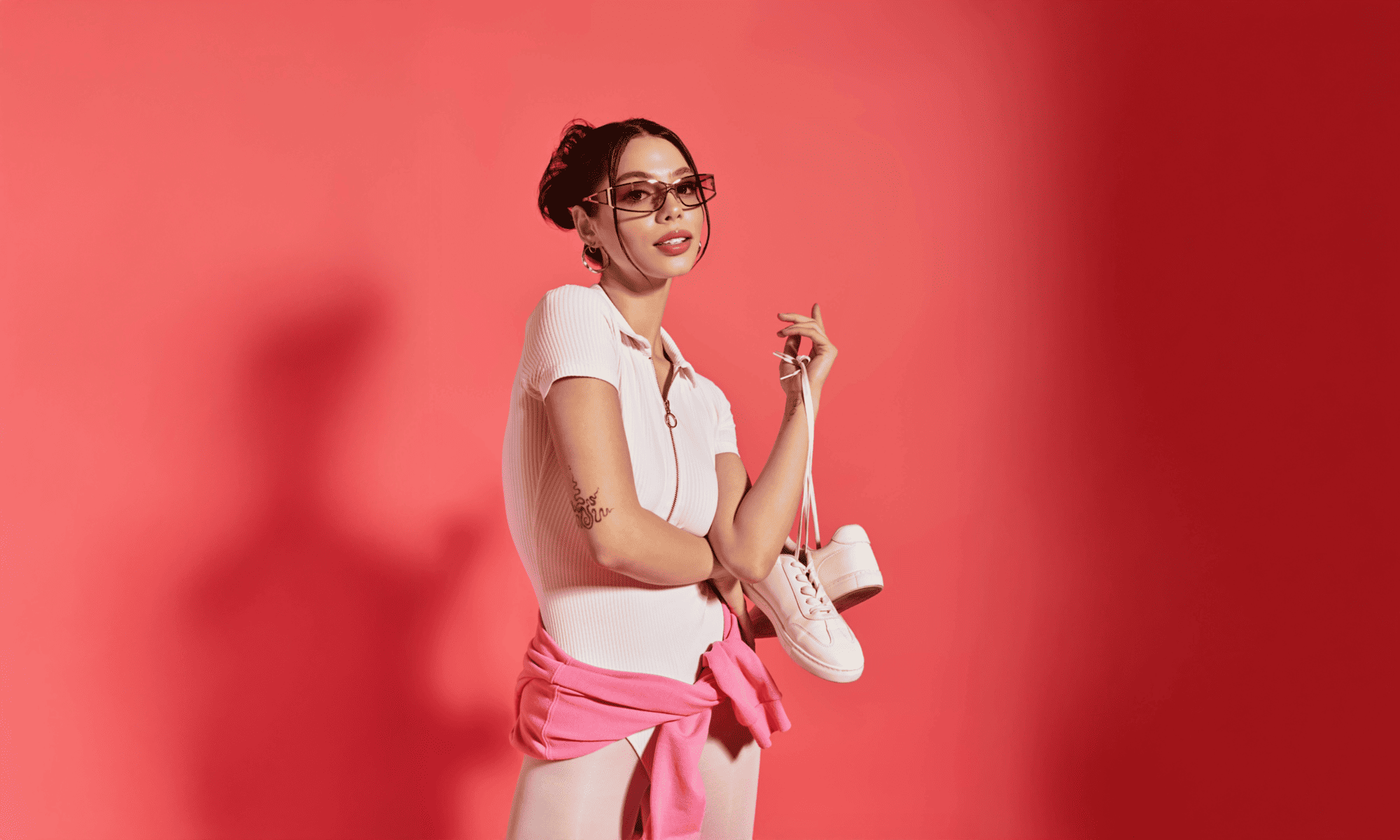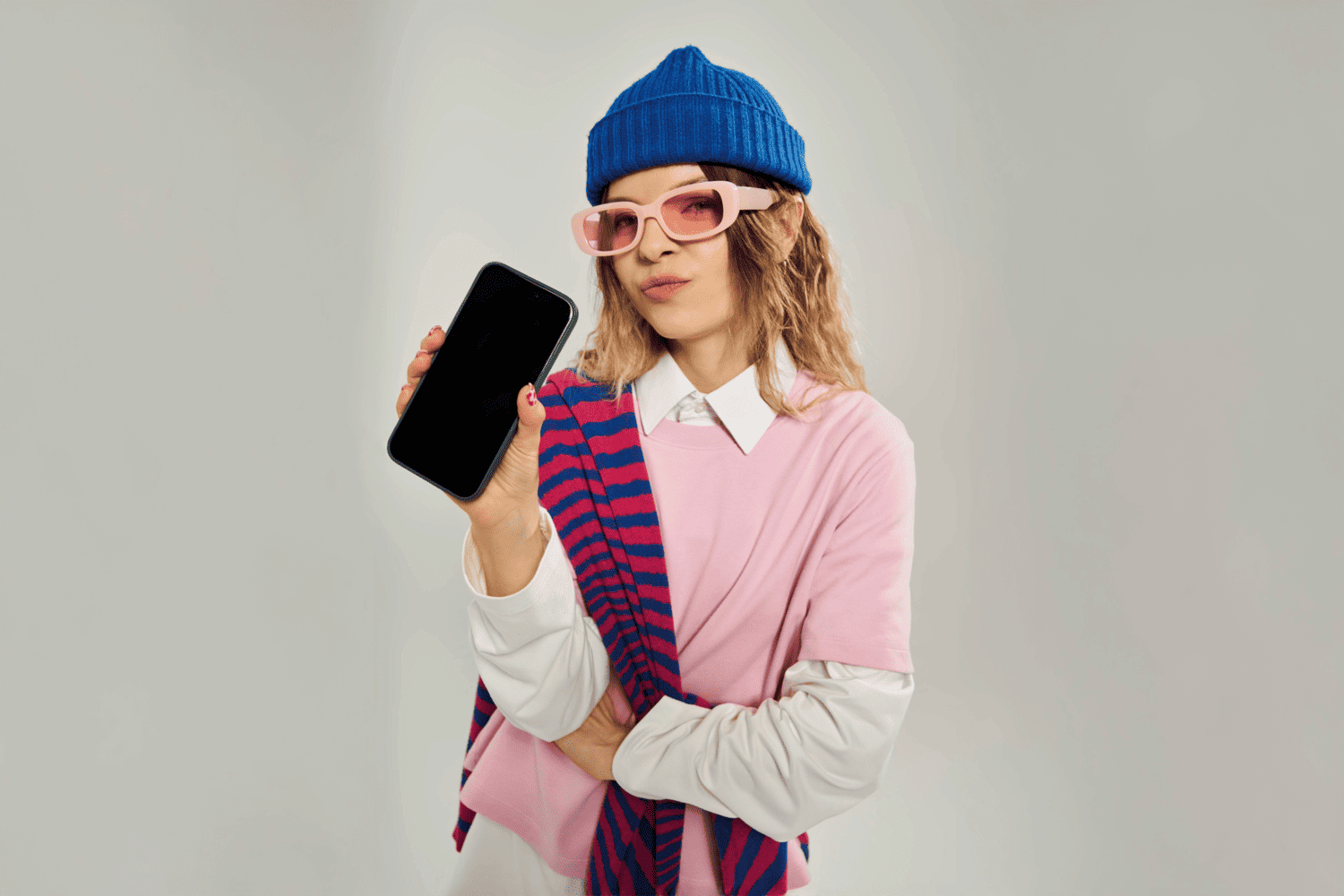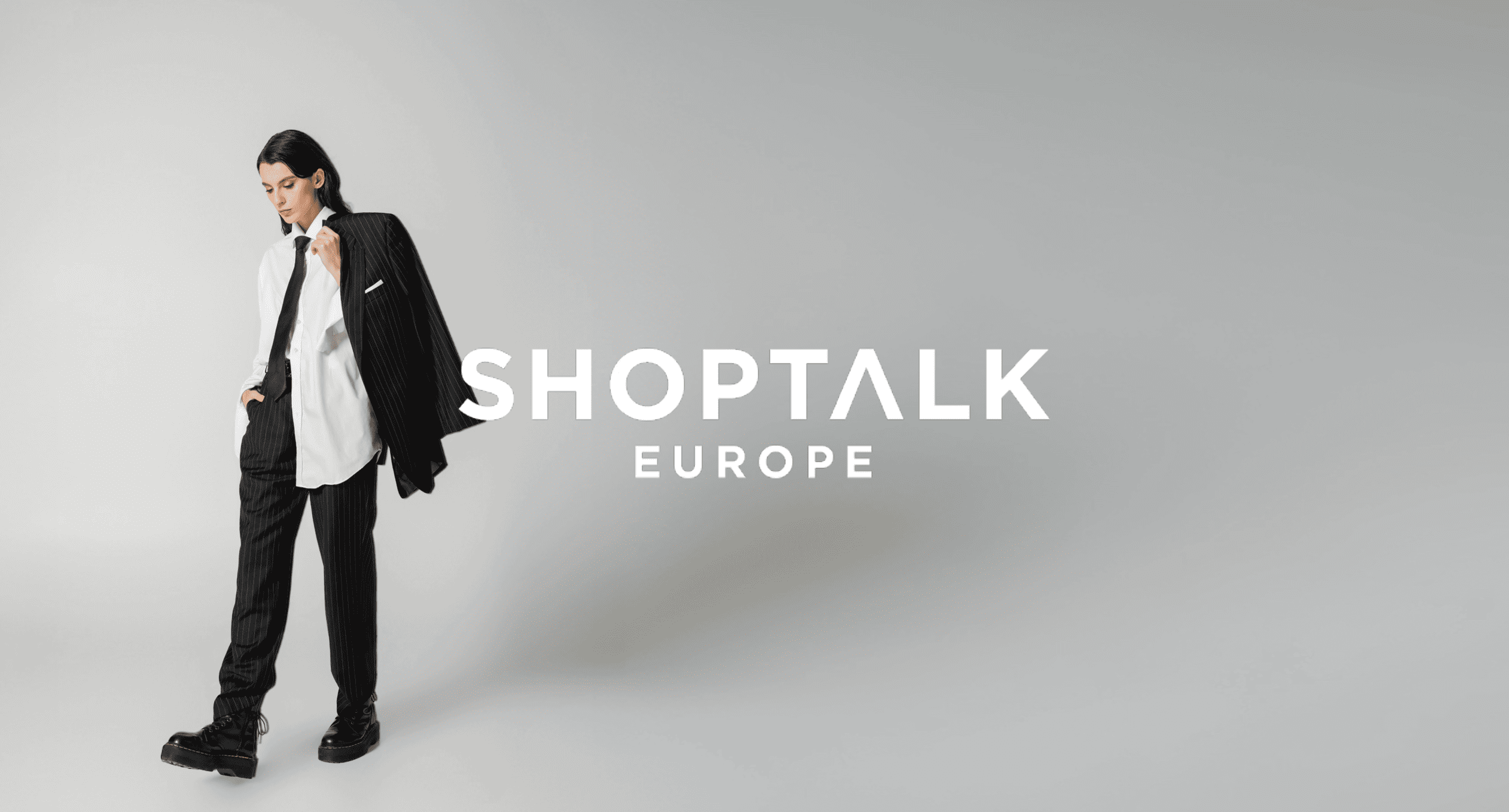August 2025
E-Commerce Product Photography Guide for Fashion Retailers
Ester Bazzanella

You’re walking down the street when you see it. A flash in the corner of your eye stops you in your tracks.
It’s a window display, You gasp. Is that?! Yes. It is. It’s the perfect top you’ve been searching for for weeks, staring right back at you.
You step inside and ask if they have your size. “Yes,” the salesperson says, “I’ll grab that for you.”
As they bring it over, they start explaining the material, technology, and care instructions. But none of that matters. You were hooked by the look.
Visuals are what sell in fashion.
We buy clothes based on appearance first. Even when shoppers want a piece for a specific function, say a pair of gym shorts or a cozy sweater for lounging at home, they still want to look good.
That’s why e-commerce product photography is everything. In store, shoppers can see garments for themselves. Online, it’s your images that do the talking. So what’s the best way to present them?
In this guide, we’ll explain why product photography is so important if you’re an online clothing retailer, cover the basics of apparel photography, and share some practical tips for you to take better photos.
Why are apparel product photos so important?
Because, first and foremost, they’re what sell clothing online.
Visuals are what catch your eye in person, and online they’re what influence shoppers to click on product links. They also have a big impact on conversion and return rates.
According to the Baymard Institute, just over half of users’ (56%) browse the product images as soon as they land on a product page. When browsing product images for clothing, shoppers are deciding if a piece will look good on them. They’re making up their mind on the fit and if it’s worth adding to their cart.
To that end, the quality of your images is also extremely important. It influences how shoppers perceive your clothing. Low quality photos will be associated with a low quality product. If you want to charge a premium price for your clothing, they need to look premium in your photos.
And there’s data to back this up.
In an Etsy buyer survey, 90% of shoppers considered the quality of a product photo to be “extremely important” or “very important” to their purchase decision. Meanwhile, a report published by Photoroom stated that 94% of clothing brands had higher conversion rates with higher quality photos. Finally, a study by Emarketer found that just over a third of shoppers returned products because the product didn’t look the same as in the photos.
So yes. If you’re selling clothing online, high-quality photos are extremely important. But aside from taking high quality photos, what kinds of photos should you take? Let’s take a look at the most common types of product photos in fashion e-commerce.
Types of Clothing Product Photos
While reading the fashion e-commerce product photography styles below, keep in mind that you can, and should, use more than one style on your product details page. In fact, 75% of brands use more than one approach in their product listings to give shoppers a fuller sense of how a piece looks and feels.
Each type of photography serves a distinct purpose, and when combined, they help create a complete shopping experience.
Flatlays
Flatlays are one of the simplest yet most versatile options. Clothes are carefully arranged on a flat surface and photographed from above. Flatlay e-commerce product photography is great for showing details like fabric texture and stitching. It gives a clean, editorial look that works well for social media as much as product pages.
Photos on Models or Mannequins
Photos on models or mannequins go a step further by showing how a garment actually looks when worn. These shots provide context for fit, drape, and proportion, which are details customers care about when imagining themselves in the item. Models also add emotion and personality, while mannequins offer a neutral, consistent presentation.
If you do use models, make sure to include the model’s height and the size worn in the product description. It’s a nice touch and another tool that helps shoppers decide what size to order.
Invisible Mannequin
Invisible mannequin photos, also known as ghost mannequin photos, provide a polished way to highlight a garment’s true shape. By digitally removing the mannequin, the clothing appears to float on its own. This creates a crisp, professional look that emphasizes tailoring, seams, and structure without distraction.
Lifestyle Shots
Lifestyle shots bring clothing into the real world. A jacket photographed on a bustling city street or a summer dress captured in a sunny park allows shoppers to imagine how they might wear it in their own lives. These shots aren’t just selling the garment, but also the feeling and lifestyle depicted in the photo.
Action Shots
Action shots take this idea further by capturing clothing in motion. They reveal how fabric moves, stretches, or flows and are particularly powerful for activewear, outerwear, or anything designed with performance in mind. Shoppers can better gauge comfort and functionality when they see a garment in action.
Video
Video obviously isn’t a style of photography, and a video shouldn’t be the first image in your product feed, but it is a nice add on. Especially if you sell activewear or gymwear, or any activity-specific apparel. Video goes a step further than action shots and lets your shoppers see how your garments move. It gives depth and dynamism to listings and can often be the deciding factor for hesitant shoppers.
Influencers Photos and UGC
Like video, Influencer photos and user-generated content shouldn’t be included in the main photo gallery for a product, but they can be added further down on your product page. They give shoppers a little more context and make the clothing feel more relatable.
How to Take Great Clothing Photos
You’re ready to take your fashion e-commerce photography to the next level, but where should you begin? Do you need a professional camera setup and a rented studio? Not necessarily. Today, creating beautiful product photography is more accessible than ever. With just a white foam board from the craft store and the smartphone in your pocket, you can already start producing clean flatlay shots.
Of course, if you have the budget to invest in professional equipment or stylized sets, that will only elevate your results. But the real key is quality. Every photo should showcase your clothing clearly, consistently, and in a way that matches the brand story you want to tell.
Think About What Makes Sense For Your Brand
Branding is a huge part of fashion.
So before you set up your camera, consider who you’re speaking to. Are your shoppers drawn to minimalist luxury, playful streetwear, or outdoor adventure? Your photos should reflect that lifestyle.
For example, a brand targeting young professionals might lean into clean, polished photography that highlights tailoring and textures, while a streetwear label could favor bold compositions with urban backdrops.
The more your visuals align with your audience’s expectations, the more likely they are to connect with your products.
Find the Right Location
Location sets the stage for your clothing. Just as a boutique’s interior design reinforces its identity, your photo backdrops should be chosen with intention.
Selling performance wear? A forest trail or mountain overlook communicates adventure better than a white wall ever could.
Marketing gym apparel? A real training space adds authenticity.
Even if you’re shooting in a small studio or at home, you can create the right atmosphere with props, flooring, or textured backdrops that fit your brand’s world.
Lighting, Camera, Angles
Good lighting transforms an ordinary photo into a professional one. Aim for soft, diffused light that avoids harsh shadows. Natural daylight near a window works beautifully, or you can use affordable softbox kits to mimic studio lighting.
A DSLR or mirrorless camera will give you more control, but don’t underestimate modern smartphones. What matters most is showing the garment in its best light and from all the angles shoppers care about.
In fashion e-commerce, providing at least 5 to 7 photos per product is standard practice. Include front, back, and side views, along with close-ups that highlight fabric details, embroidery, zippers, or stitching. The more angles you show, the more confident your customers feel adding an item to their cart.
Use a Clean Consistent Background
The background of your photos doesn’t have to be elaborate.Simple often works best. Nearly half of fashion brands (47%) shoot against a white studio background, for example, while 19% use real-life settings to bring products to life.
Whichever you choose, keep it consistent.
Minimalist, distraction-free backgrounds let the clothes take center stage. Using the same framing and tone across your product catalog not only makes your store look professional but also reinforces brand recognition.
Consistency gives shoppers a sense of trust, which translates directly into higher conversions.
Invest in Post Editing
Even the best raw photos need refining. Editing is where you fine-tune your consistency. Apply the same adjustments for exposure, white balance, and cropping across all your images to ensure the uniform look we mentioned above.
Accurate color representation is critical, since nothing frustrates a shopper more than ordering a vibrant red dress that arrives looking burgundy. Take the time to align tones, backgrounds, and proportions so every product image looks cohesive. This polish gives your site the premium, reliable feel that customers expect when shopping online.
From Photos to Sales
Product photography is one of the most powerful tools in your e-commerce arsenal. The right mix of photo styles, paired with thoughtful execution and consistent editing, does more than showcase your clothing. It builds trust, reduces returns, and creates a shopping experience that feels as close as possible to trying something on in person. Whether you’re shooting with a smartphone or a full studio setup, the goal is the same: make your products look their best and tell the story your brand stands for.
If you’re looking for other ways to boost your conversions, make sure to check out our introduction to fashion e-commerce marketing.

